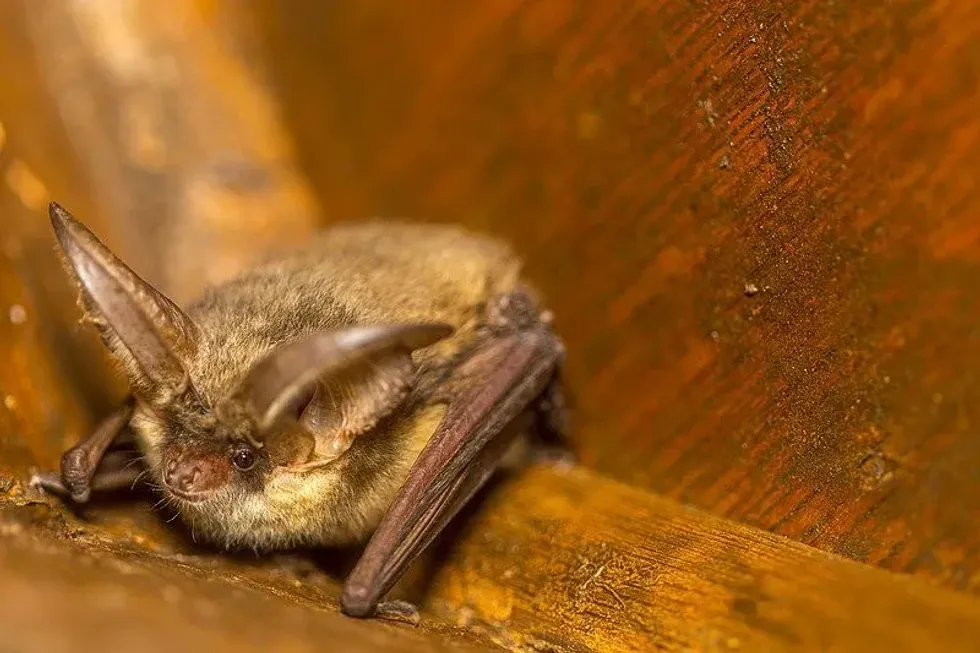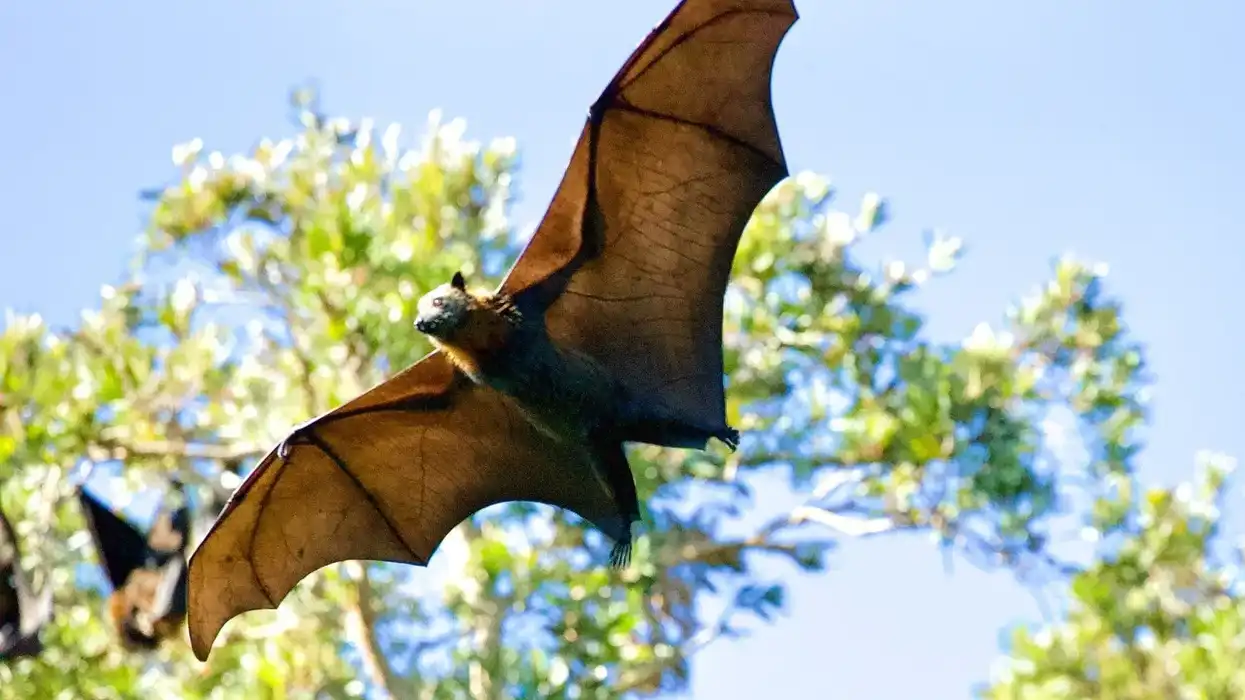The brown long-eared bat, as the name suggests, is known for its unnaturally long ears. These ears are used to echolocate their prey, and of course, evade any oncoming predators. To locate prey, echolocation is used.
This bat species uses frequencies between 27-56 kHz for echolocation. Unlike most bats, however, the long-eared may pursue their prey only by hearing. Their hearing is acute enough to detect a flying moth.
Long-eared bats roost in trees that are near the ground. Appearance from roost sites normally happens in the dark, about an hour following sunset.
Brown long-eared bats are found throughout Europe and are fairly abundant. This bat is found on the mainland of the United Kingdom, but not on Shetland, Orkney, or the Outer Hebrides Islands. This species of bat is not endemic.
The world is full of interesting living creatures, and we share much of our lives with them. The brown long-eared bat is only one of them, and there are several other unique creatures, like the black browed albatross and silver dollar, to learn about.
Brown Long-Eared Bat Interesting Facts
What type of animal is a brown long-eared bat?
The brown long-eared bat (Plecotus auritus) is a type of bat.
What class of animal does a brown long-eared bat belong to?
The brown long-eared bat (Plecotus auritus) belongs to the class of mammals.
How many brown long-eared bats are there in the world?
In recent years, studies of hibernation roosts have revealed a constant population. They can be found all over the United Kingdom and Ireland, except for northern Scotland's hilly highlands and several Scottish islands. The population of bats in the United Kingdom is estimated to be 245,000.
Where does a brown long-eared bat live?
This bat brown long-eared lives in the woods. This is similar to fruit bats that are also found living in the woodland where they have a lot of trees in close vicinity.
What is a brown long-eared bat's habitat?
Brown long-eared bats regularly roost in uncluttered roof spaces, either alone, in crevices and logs, or bunches around fireplaces and ridge ends. Tree holes, bat boxes, and caverns are also essential winter hibernation locations for this species.
Who does a brown long-eared bat live with?
This bat with long ears sleeps individually or in groups beneath the bark, in holes or crevices of both living and dead trees. Maternity colonies typically have 30-60 females and their young. In the summer, non-reproductive females and males are alone and roost in colder places like mines and caves.
How long does a brown long-eared bat live?
The long-eared bat brown with a Least Concern conservation status can live up to 22 years.
How do they reproduce?
As males begin to cluster near hibernacula in late summer and early fall, breeding begins. Females retain sperm during hibernation until the spring after copulation.
They return from hibernacula in the spring, ovulate, and the saved sperm fertilizes an egg. This method is known as delayed fertilization. Pregnant females travel to summer locations after fertilization, where they roost in tiny colonies to give birth to a single young one.
At the start of the summer, maternal colonies of females and youngsters usually have 30-60 bats, while bigger maternity communities have been reported. By 18-21 days after giving birth, young bats can fly.
What is their conservation status?
The conservation status of the brown long-eared bat with distinct long ears is Least Concern declared by the IUCN (International Union for Conservation of Nature). Another species of bats, megabats has a conversation status of Vulnerable.
Brown Long-Eared Bat Fun Facts
What do brown long-eared bats look like?
This species is a medium-sized bat with huge ears and has a noticeable fold on its back. Large-eared bats have 1.3-1.5 in (3.3–3.8 cm) long ears, nearly as long as their body, that easily differentiate them from many other bat species.
In addition, they exhibit grayish-brown fur, a 9 in (22.8 cm) wingspan, and a total length of roughly 3.7 in (9.3 cm).
As a result, brown long-eared bats are frequently confused with gray long-eared bats. However, gray long-eared bats are a Mediterranean species only seen in a few colonies in southern England.
How cute are they?
Adult bats are not usually cute, although baby bats are cute and little in size.
How do they communicate?
Due to its gentle voice, brown long-eared bats that possess large ears are also known as the whispering bat. Brown long-eared bats have very faint sounds that range from 25-50 kHz and can only be detected with a bat sensor if the bat is within 16.4 ft (5 m).
How big is a brown long-eared bat?
The average body length of this species of bat is about 3.7 in (9.3 cm). On the other hand, the greater mouse-eared bat with ears like a mouse measures between 2.55-3.14 in (6.4-8 cm). The long-eared species is bigger than mouse-eared bats that hunt in woodland areas.
How fast can a brown long-eared bat fly?
These bats have a slow and low flight, flapping usually close to plants. Sweep glides and hovering are common. Even in limited spaces, the flight is extremely nimble.
A juvenile brown long-eared bat's wings expand quicker than their body weight, changing their wing loading and their capacity to fly as they mature. Because of this allometric development, juveniles have grown more maneuverable and can glide more slowly at low power at 30 days. This is also when brown long-eared bats depart their roost for the first time.
How much does a brown long-eared bat weigh?
The average body weight of brown long-eared bats is between 0.2-0.4 oz (5.6-11.3 g).
What are the male and female names of the species?
Male and female long-eared bats, with long ears that enjoy foraging in woodland, have no particular name.
What would you call a baby brown long-eared bat?
There is no specific name for a baby brown long-eared bat with roost-sites in hollows of trees and bat-boxes.
What do they eat?
The brown long-eared bat forages for insects off the bark and leaves above woodland, often during the day. It primarily hunts for moths.
Prey is most likely found by sound and sight rather than echolocation, using its huge ears and eyes. The ability of the brown long-eared bat to optically recognize prey has been discovered in a study. On the other hand, visual cues were more essential than sonar cues, and the bats could not find prey using sonar cues solely.
Brown long-eared bats feature huge ears and eyes. Therefore it's likely that passive listening and visual information help them find prey in crowded surroundings.
Are they dangerous?
This species that owns huge ears and prefers a habitat in woodland are not normally hazardous, but they can be as they have been linked to diseases such as rabies.
Would they make a good pet?
No as they are illegal to have as pets.
Did you know...
Bats, unlike birds, can't raise themselves into the sky from the floor because their wings don't provide enough pull to lift them like a helicopter. If sleeping bats have to flee fast, they are already in the ideal position to stretch the wings and fly off by hanging upside-down.
Ghost bats are believed to be the only carnivorous bats in Australia.
Are brown long-eared bats protected?
The Wildlife and Countryside Act of 1981 protects this species in the United Kingdom.
Do long-eared bats hibernate?
Brown long-eared bats hibernate in tunnels, caverns, and mines called hibernacula during the winter, usually around November and April. They use mines and caves of varying sizes that provide consistent temperatures, extreme humidity, and no air currents.
Here at Kidadl, we have carefully created lots of interesting family-friendly animal facts for everyone to discover! For more relatable content, check out these hoary bat facts and Mexican free-tailed bat facts for kids.
You can even occupy yourself at home by coloring in one of our free printable brown long eared bat coloring pages.










